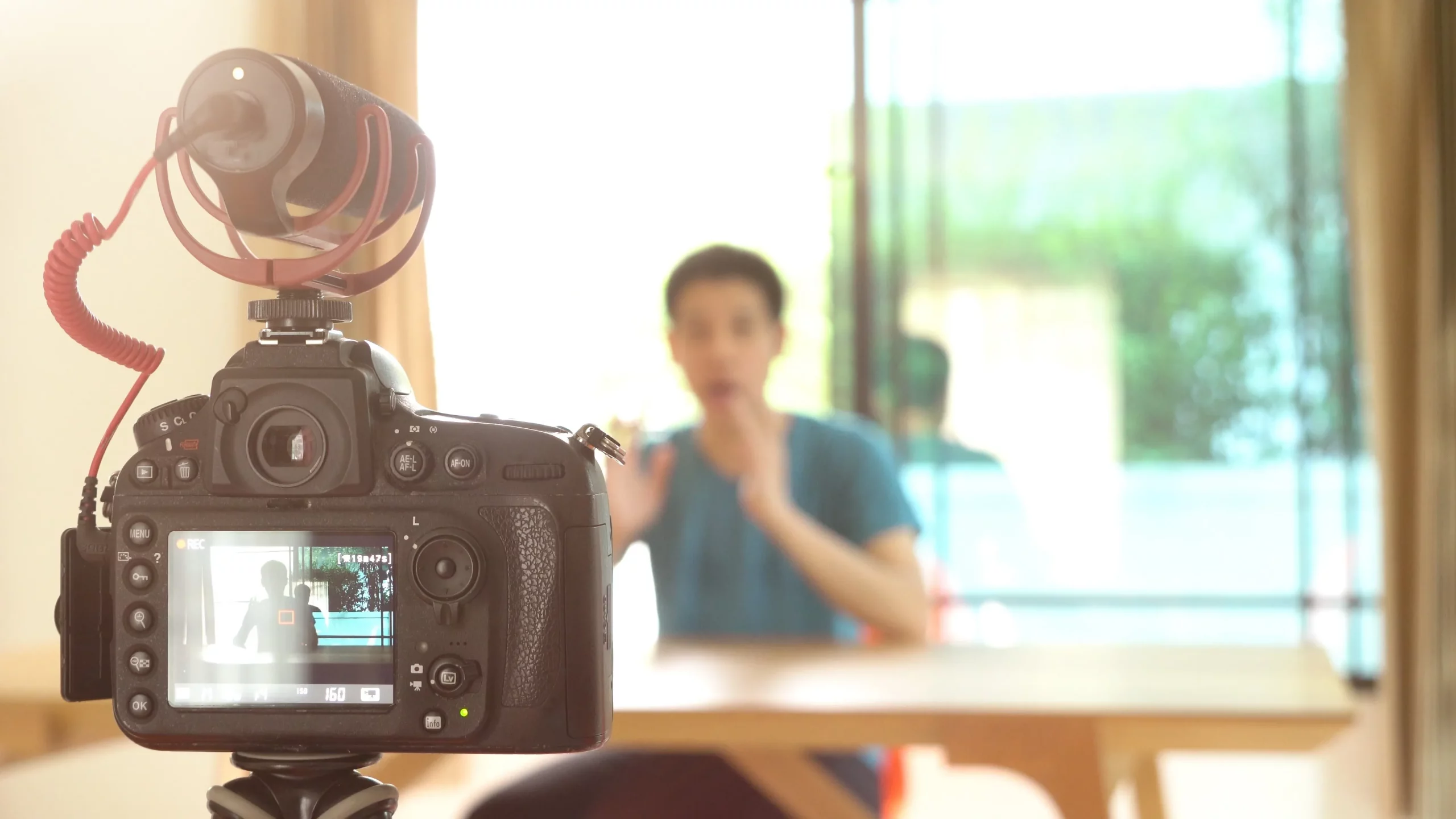
With the unprecedented use of tabs and features, social media today is booming all around the United States, especially among students. Since the start of Instagram, TikTok and YouTube, a new trend was born and emerged: the era of social media influencers.
These individuals albeit having a plethora of followers and a major impact concerning the perception of the populous, in our case young adults and students, concerning their lifestyle and spending preferences. The impact of social media influencers on student lifestyle and spending habits is significant, often shaping trends and choices, so if you’re asking, “Can I pay someone to write my research paper?” it might be wise to seek help. Academized.com is a great writing service for students who need assistance with their research papers while navigating these influences.
In this article, we will shed light on how social media influencers are shaping students’ lifestyle and spending habits in the United States.
Social media influencers are a new kind of voice in our ecosystem of opinion-givers. They’re people who have gained some mode of prominence – in which others can come to trust them – by repeatedly sharing their thoughts on a subject (on, say, beauty, style, dieting, travel) with others. They post to social media, via their feed, their story or a video clip, and the audience engages with them, hears from them, sees a little bit of what they’re up to, learns from them about a product or a trick that’ll make them happier.
Such influencers may act as the kind of role models – someone on a path to achieving a dream – or a trusted source that students (especially vulnerable and impressionable teens) need at this particular point in their development. Given the informal nature of influencer videos, they can be perceived as reachable and relatable, and content might be more appealing to younger audiences who have a sense of intimacy with the content creators they follow.
Lifestyle Changes Inspired by Influencers
The most dramatic way that social media influencers affect students is by influencing them to change their lifestyles. For instance, many creators lift certain types of lifestyles and promote those on their respective social media channels. Students who are trying to find their identity can find this kind of content particularly appealing. This can range from eating and exercise habits to fashion and social life styles.
The impact of social media influencers on student lifestyle and spending habits is profound, making it essential to read the best case study writing services review for guidance on exploring this topic in-depth. For instance, health and fitness influencers may help students eat more healthy or start an exercise regimen. Fashion influencers could impact what someone chooses to wear or what their style is. Travel influencers might inspire students to focus on experiences and adventure, which could impact which study abroad program they choose or where they go for the weekend.
Running beneath the positive influences, such as those encouraging students to explore new pastimes, opportunities and ways of being, can be an undercurrent of unrealistic expectations: curated Instagram lives often represent not the ‘real’ experience of student life and, in comparison with those influencers, students can feel inadequate or pressured to perform in certain ways or meet imaginary ideals.
The Impact on Student Spending Habits
One of the most noticeable effects of these influencers on the behavior of students might be seen in their spending habits. Influencers often endorse products they use through sponsored content and affiliate marketing, and this type of advertising can be quite powerful when it’s coming from someone who the audience already trusts.
Students, who likely have a lower disposable income, might be more likely to buy something recommended by their favorite influencer, going from cheaper items like make-up or phone accessories to more expensive ones like electronic items or clothing.
Trend pressure to fit in and own the latest goods and services results in impulse purchases. Numerous students shared that social pressures to own certain products and to emulate influencers create an expectation that results in impulse purchases – often by using or asking Mom or Dad’s credit card without parental consent, which exposes the debtor to long-term consequences.
Common categories of influencer-promoted products and their potential impact on student spending:
| Product Category | Examples | Potential Impact on Student Spending |
|---|---|---|
| Fashion | Clothing, accessories, shoes | High - frequent purchases, brand consciousness |
| Beauty | Makeup, skincare products | Moderate to High - regular replenishment needed |
| Technology | Smartphones, laptops, gadgets | High - expensive, but less frequent purchases |
| Food & Drink | Meal kits, specialty foods, energy drinks | Moderate - recurring costs can add up |
| Fitness | Gym memberships, workout gear, supplements | Moderate to High - initial investment and ongoing costs |
| Travel | Luggage, travel accessories, experiences | Variable - can be very high for major trips |
The Psychology Behind Influencer Marketing
To explain why influencer marketing appeals so strongly to students, we need to look into psychology – specifically the principle of social proof. This is the tendency people have to look to others’ behavior as an indicator of the correct behavior for a particular situation. If someone is doing something, it must be the right thing to do. Students feel an inclination to follow the influencers’ example.
Furthermore, the parasocial relationships that develop between influencers and followers make product endorsements seem less like commercial ads and more like advice from a friend. This makes students vulnerable to influencer-endorsed products and lifestyles.
The other psychological factor at play is FOMO (the fear of missing out) – if influencers make people feel that they must ‘hurry up’ to partake in a product or experience because it won’t always be available like that, students can feel that they won’t have the same experiences as their friends if they don’t do so too.
Navigating the Influencer Landscape
Meanwhile, it’s not true that all social media influencers are darkening the lifestyles and spending habits of students. Important numbers of influencers have messages about what it means to be a good, altruistic consumer, with many focusing on self-care, education or getting ahead. The challenge for students is to become increasingly sophisticated in their critical and responsible engagement with these messages.
But developing media literacy skills – including a knowledge of how influencer marketing works, the capacity to spot sponsored content from genuine endorsements or reviews, and to recognise ‘curated reality’ as opposed to ordinary experience – is more vital for Generation Z than ever before.
Financial literacy is also crucial. Students should be encouraged to be smart shoppers, learning how to budget and how to think about what they’re trying to buy. How a student thinks about paying for something – is she learning the difference between needs and wants? – and thinking ahead about the impact of her purchases in the long term will help her to make smarter purchases.
The Role of Educational Institutions
They can also help by offering lessons on social media, strengthening the mindset of students, and providing them with tools and guidelines to help them maneuver through this influencer-driven digital space. Some colleges and universities have recently introduced courses in media and financial literacy. Students can benefit from such courses and become better equipped to discern the influences they are exposed to on social media, and to make informed choices around their identity and spending habits.
For some schools, the solution is bringing speakers – sometimes the influencers themselves, and sometimes social media experts – in to talk to students about the realities of the job in the context of a booming influencer business.
Positive Influences and Opportunities
This is not to say that social media personalities and their influence are not wholly positive. Plenty of influencers encourage their followers – who happen to be mostly students – to get involved with causes, raise awareness for social issues or engage with civics in their communities. According to a report in The Atlantic on the influence of ‘Aunt Becky’ (the college admissions fraudster did not simply steal students’ spots in university, she took over their social media feeds), the very phenomenon that enabled her predatory scheme can also lead to more students volunteering, donating, engaging in activism and serving in their communities.
Furthermore, the growth of an influencer economy has opened up new career opportunities for young people. Plenty of students are using content creation as a side hustle or even a primary career path. Many more are studying digital marketing, video production or social media management, or hoping to do so in the future.
The Future of Influencer Impact on Students
This pattern of influence is already changing as social media evolves, creating new opportunities for platforms and technologies such as virtual and augmented reality to bring influencers and student audiences closer together.
But there is also growing emphasis on micro-influencers, who have smaller but more engaged followings. These tend to be people with a narrower and deeper focus, who can generate more specific content and recommendations. In the case of students, they might prove more diverse and relevant.
Conclusion
Social media influencers have both positive and negative influences on students’ lifestyles and spending habits as they can inspire positive changes or encourage unrealistic expectations and problematic spending habits.
On the one hand, influencers often prevent students from making harmful life choices by the simple virtue of influencing them. For example, an influencer who promotes a healthy lifestyle can inspire someone otherwise inclined to follow dangerous habits to adopt a lifestyle that prioritizes their well-being. Moreover, influencers can provide access to important information for those who might otherwise struggle to acquire it.
Social media influencers can result in unrealistic expectations and problematic spending habits. For instance, an influencer who promotes excessive indulgence in luxurious items can cause much harm by encouraging others to overspend and adopt unhealthy spending habits, which can lead to financial difficulties in the long term.
And as the influencer industry grows and changes, students will need these skills more than ever. The future of the influencer industry depends on kids being able to engage with it in a responsible way, and students are the ones who ultimately benefit by developing the kind of media and financial literacies that allow for thoughtful and critical engagement. By teaching students to think critically, to be wary of the influences that may be trying to sell them things, and to have a healthy, balanced relationship with social media, we can help them to cultivate the skills to make the most of influencer culture while minimizing its negativities.
Ideally, what we want is for students to consider the advice of influencers a part of a wider set of information they use to inform and influence their lifestyle and spending choices. We want them to absorb all the positive aspects of what has been branded on its own as influencer culture and then act accordingly – without sacrificing their personal finances or personal authenticity.
Raghav is a talented content writer with a passion for creating informative and interesting articles. With a degree in English Literature, Raghav possesses an inquisitive mind and a thirst for learning. Raghav is a fact enthusiast who loves to unearth fascinating facts from a wide range of subjects. He firmly believes that learning is a lifelong journey and he is constantly seeking opportunities to increase his knowledge and discover new facts. So make sure to check out Raghav’s work for a wonderful reading.




